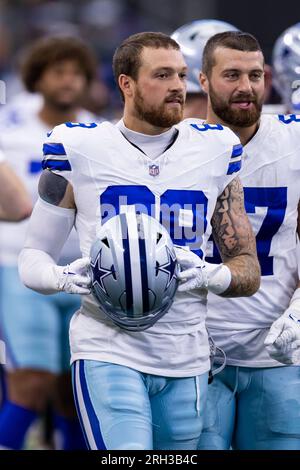Former Dallas Cowboys tight end Peyton Hendershot has recently shared candid insights into the cultural differences between his former team and his current one, the Kansas City Chiefs. In a discussion at Super Bowl LVIX, Hendershot highlighted the contrasting priorities and environments of the two organizations.
Transition from Dallas to Kansas City
Hendershot began his NFL career with the Cowboys as an undrafted free agent in 2022. During his tenure in Dallas, he appeared in 25 games over two seasons, recording 15 receptions for 141 yards and two touchdowns. In August 2024, he was traded to the Kansas City Chiefs in exchange for a conditional seventh-round pick in 2026.
Cultural

Reflecting on his experiences, Hendershot remarked on the distinct cultural differences between the Cowboys and the Chiefs. He noted that in Kansas City, the focus is “strictly football and winning,” with minimal emphasis on external activities. In contrast, he observed that the Cowboys place a significant emphasis on “public image” and “extracurriculars,” such as autograph signings and promotional events.
Impact on Team Dynamics
Hendershot’s observations shed light on how organizational culture can influence team dynamics and player focus. He mentioned that during his time with the Cowboys, the presence of fans during practices and other off-field activities could be distracting. This environment, he suggested, might divert attention from the primary goal of winning games.
Reactions from the NFL Community
Hendershot’s comments have sparked discussions among fans and analysts. Some have expressed concern that the Cowboys’ emphasis on marketing and public relations may detract from their competitive edge. Others believe that the franchise’s focus on brand building is a strategic approach to maintaining its status as “America’s Team.”
Looking Ahead
As the NFL continues to evolve, the balance between on-field performance and off-field activities remains a topic of interest. Hendershot’s insights offer a glimpse into the internal workings of two prominent NFL organizations, highlighting how cultural priorities can shape a team’s success and player experiences.


